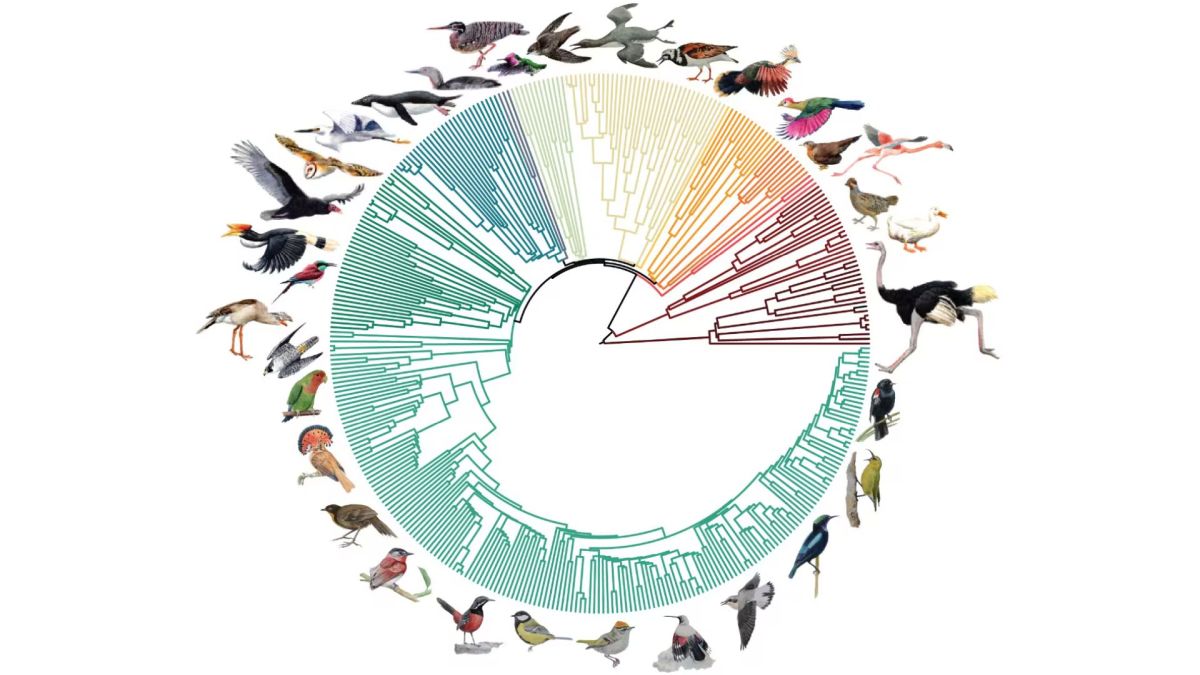The most extensive and comprehensive analysis of modern bird genomes to date has led to the reconstruction of the bird family tree, challenging conventional perspectives on the evolutionary narrative of birds.
Published in the esteemed journal Nature, the study integrates genomic information from over 360 bird species with data sourced from approximately 200 bird fossils. This groundbreaking research, spanning almost a decade, involved collaboration among scientists worldwide as part of the Bird 10,000 Genomes Project (B10K), which aims to sequence the entire genomes of every existing bird species.
Lead author Josefin Stiller, a biologist at the University of Copenhagen in Denmark, states, “Our research has not only settled previous debates regarding the bird family tree but has also introduced fresh intricacies to the established understanding of bird evolution.”
Divergence times for 363 bird species based on 63,430 intergenic loci. Credit: Josefin Stiller
Among the approximately 10,000 living bird species, three primary clades emerge. Approximately 5% of these species belong to either the Palaeognathae group – encompassing flightless birds like the ostrich, cassowary, and emu – or the Galloanseres group, which includes both landfowl and waterfowl.
The remaining 95% of bird species belong to a diverse third clade known as the Neoaves.
This recent study suggests that the majority of Neoaves species emerged within a remarkably brief evolutionary timeframe of merely 5 million years, during a period of swift diversification following the Cretaceous–Paleogene extinction event 66 million years ago.
Dr. Jacqueline Nguyen, an avian palaeontologist at the Australian Museum and Flinders University and a co-author of the study, highlights that “by amalgamating evidence from close to 200 bird fossils, we were able to identify a crucial phase of bird diversification that occurred immediately after the demise of the dinosaurs.”
Furthermore, the research team discovered that this era coincided with notable genetic and morphological transformations in birds, such as accelerated mutation rates, reduced body sizes, larger brains, and expanded effective population sizes.
“This underscores the significance of comparative genomics: through the comparison of genomes from existing species, we can unveil remnants of occurrences that transpired 66 million years ago,” Stiller adds.
The revelations also provide scientists with the most lucid depiction of the bird family tree to date, especially within the Neoaves. The revised tree challenges the previous classification of Neoaves by reorganizing it into four principal sub-groups: Mirandornithes, Columbaves, Telluraves, and a newly proposed cluster named ‘Elementaves’ by the researchers.
Drawing inspiration from the four elements of earth, air, water, and fire, this group encompasses birds that thrive on land, in the skies, and in water – such as penguins, pelicans, hummingbirds, and shorebirds.
Guojie Zhang, the senior author of the paper and a professor of evolutionary biology at Zhejiang University, China, remarks, “Our efforts have reshaped numerous traditional perspectives on the evolutionary timeline of birds.”
“This fresh family tree will serve as a robust foundation for tracing the evolutionary journey of all bird species, carrying significant implications for ornithological research and biodiversity investigations.”
